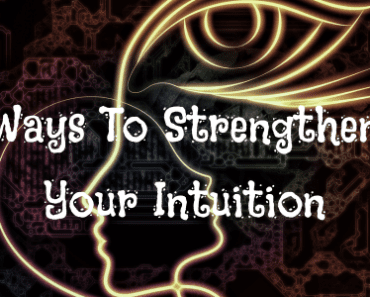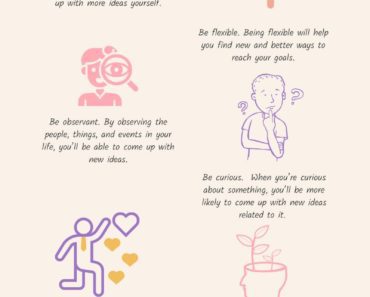Creative possibilities mean different things to different people. To some, it might be coming up with new ideas for products or services. Others might interpret it as finding new and innovative ways to market their business. And still, others might see it as simply being more creative in their everyday lives at home or at play. No matter how you define it, the ability to see creative possibilities is a valuable skill. And it’s one that you can develop with a little bit of effort.
5 Tips To Help you See Creative Possibilities Everywhere

1. Be Open To New Experiences
If you want to be more creative, you need to be open to new experiences. Many people go through life only ever seeing things in the way that they expect to see them. However, if you’re open to new experiences, you may find that you start to see creative possibilities that you never would have thought of before.
This is because, when you’re open to new experiences, you’re more likely to be receptive to new ideas.
You’ll also find that your mind is more flexible and can come up with creative solutions to problems more easily.
So, if you’re feeling stuck in a rut, why not try something new? You may be surprised at what you discover.
This means trying new things, even if they seem a little bit out of your comfort zone.
2. Look For Connections
Creativity often comes from making connections between things that might not seem related at first glance. So, when you’re trying to be more creative, look for connections between the things you’re experiencing. How do they relate to each other? What commonalities do you see?
One of the best ways to practice making connections between things that may not seem related is to brainstorm creative possibilities.
For example, let’s say you’re given the task of creating a new flavor of ice cream. You might start by thinking about what flavors you already like, and then try to come up with a combination that would taste good together. But don’t stop there! Try to think outside the box and come up with some unlikely flavor combinations. Maybe pair chocolate with celery or combine green tea and cheese.
The more practice you have at brainstorming creative possibilities, the easier it will be to see relationships between things that may not seem obviously related.
3. Ask A Lot Of Questions
When you’re faced with a problem or challenge, don’t be afraid to ask questions. Creative solutions often come from thinking about problems in new and different ways. So, by asking questions, you can help yourself see problems from a fresh perspective.
Try to avoid yes or no questions. These types of questions tend to elicit simple, straightforward answers that don’t encourage much creativity. Instead, ask open-ended questions that require your team to think outside the box.
Example of open-ended questions:
- How do you feel about your current situation?
- What are your thoughts on the current state of affairs?
- What is your opinion on the matter?
- How do you see things playing out?
These are all examples of open-ended questions that can’t be answered with a simple yes or no. They require elaboration and thought in order to provide a satisfactory answer.
Another tip is to avoid leading questions that suggest a particular answer. This type of question can inadvertently shut down creative thinking.
Finally, try to ask provocative questions that challenge assumptions and help push you in new directions. By asking the right kind of questions, you can create opportunities for truly innovative thinking.
Here are a few more examples of questions you may want to ask:
- How could we approach this problem from a different perspective?
- What if we looked at this issue through a different lens?
- What would happen if we took a completely different approach to this situation?
- How could we turn this challenge into an opportunity?
- What are some creative ways to solve this problem?
- What are some unhelpful ideas?
- How can we think outside the box to find a solution to this issue?
- What are some unconventional methods we could use to achieve our goals?
- How can we push the boundaries to come up with new ideas?
- What are some risks we could take to create something innovative?
4. Be Persistent
Creativity doesn’t always come easy. There will be times when you feel stuck and like you can’t come up with any good ideas. But it’s important to persevere through those tough moments. If you keep working at it, eventually the creative solutions will start flowing. Don’t give up on what you want to achieve.
5. Let Your Mind Take A Break Once In A While
Have you ever noticed that ideas tend to pop into your mind as you are relaxing or falling asleep or hanging out with friends? This is because, when you take a break from trying to be creative, your mind is better able to come up with new ideas.
So, if you’re feeling stuck, don’t force it. Take a break and let your mind wander. Meditate. Chill out. Close your eyes. You may find that the solutions to your problems come to you more easily when you’re not actively trying to think of them.
By following these tips, you can start to see creative possibilities everywhere you go. With a little bit of practice, you’ll develop this skill and be able to come up with great ideas no matter where you are or what situation you’re in.


